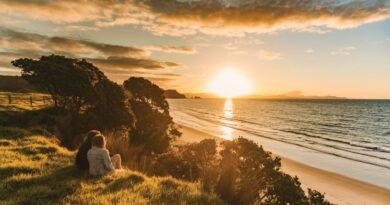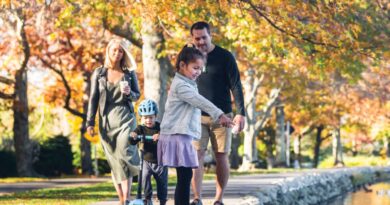Kororipo Heritage Park
Explore over 500 years of our country’s history in Kerikeri
Nestled at the upper end of Kerikeri Inlet in Te Tai Tokerau Northland, Kororipo Heritage Park is jampacked with heritage that spans over 500 years of Aotearoa New Zealand’s history. Set aside at least half a day to explore the remains of a fortified pā, an interactive Māori kāinga (village) and two of the country’s oldest buildings, all set amongst native forest and beautiful heritage gardens.
For five centuries Kororipo has been one of the most important landing and meeting places in Te Tai Tokerau Northland. The pā that was built here was a strategic site for northern Māori, culminating as the fortress and headquarters of Ngāpuhi chief Hongi Hika.
In the early 1800s Hongi Hika invited the Church Missionary Society here to Kerikeri. The settlement that was built became the place where Māori and Europeans came to trade, talk and learn from each other. Thanks to the impressive number of structures, treasures and everyday items left behind by ancestors from both cultures, Kororipo Heritage Park is now recognised as a Tohu Whenua – one of our country’s most
treasured heritage places.
If you want an authentic insight into Aotearoa New Zealand’s heritage and culture, here are our insider tips for an unforgettable visit at this must-see Tohu Whenua landmark.
Kororipo Pā
200 years ago the long-established Kororipo Pā (which means swirling waters in Māori) became the headquarters of Ngāpuhi chief Hongi Hika. Hongi was a skilled leader in war and trade who eagerly sought contact and trade with European visitors. He knew that by encouraging the build of, and protecting, a mission station adjacent to the strategically-located pā, he would create a reputation for security and increase his opportunities for trading food and supplies in exchange for European tools and weapons. These days you can follow a short, easy path to walk in the footsteps of chief Hongi Hika and the missionaries he traded with. Although only the pā’s earth trenches and walls remain, interpretation panels show what it would have looked like in its glory days. A recreated fortified viewpoint provides a stunning vista of the park’s iconic features.
Te Ahurea
Take a guided or self-guided tour at Te Ahurea, a reconstructed and interactive Māori village, to experience what life was like before Europeans arrived. Te Ahurea is based on the large kāinga (village) that was once located a short distance from Kerikeri Basin. It was a place of good fishing and growing crops such as kūmara (sweet potato). The population of the kāinga fluctuated seasonally, but it is evident that there were pātaka (food-storage platforms) and whare whakairo (ornamented houses) when chiefs such as Hongi Hika stayed there in the 1820s. Enjoy native birdsong as you stroll past a variety of Māori buildings, learn about medicinal plants in the rongoā garden, explore the small museum, and marvel at the beautifully carved waka (traditional Māori canoe). Fees apply.
Kerikeri Mission Station
Nestled on the river bank across from Te Ahurea you will find two of our country’s oldest buildings, one made of stone, the other of timber. They were both built by the Church Missionary Society, which was established here in 1819. The settlement that was built became the place where Māori and Europeans came to trade, talk and learn from each other.
The most iconic of the two buildings is the Stone Store, our country’s oldest trading store. Open for business since 1836, this Georgian warehouse has been variously used as a trading post, library, barracks, boys’ school, general store, post office and Four Square dairy before it was bought in 1975 by what is now Heritage New Zealand Pouhere Taonga, and extensively conserved. Shop for gifts on the ground floor before exploring the museum upstairs for fantastic interactive storytelling that puts faces to names and gives some context for the site.
Then join experienced guides on a tour of adjacent Kemp House, a large European home built in 1822 by highly skilled Māori and missionary carpenters. The tour is interactive and full of stories about the mission’s servants, workers and Kemp family members, as well as the influence of the missionaries on local iwi (tribe) and how Māori utilised the presence of their new European neighbours. Fees apply.
If you’re feeling peckish, the extensive grounds at Kororipo Heritage Park are ideal for picnicking. Or you can treat yourself at the awardwinning Honey House Café which is nestled in amongst heritage gardens on the banks of the river.





